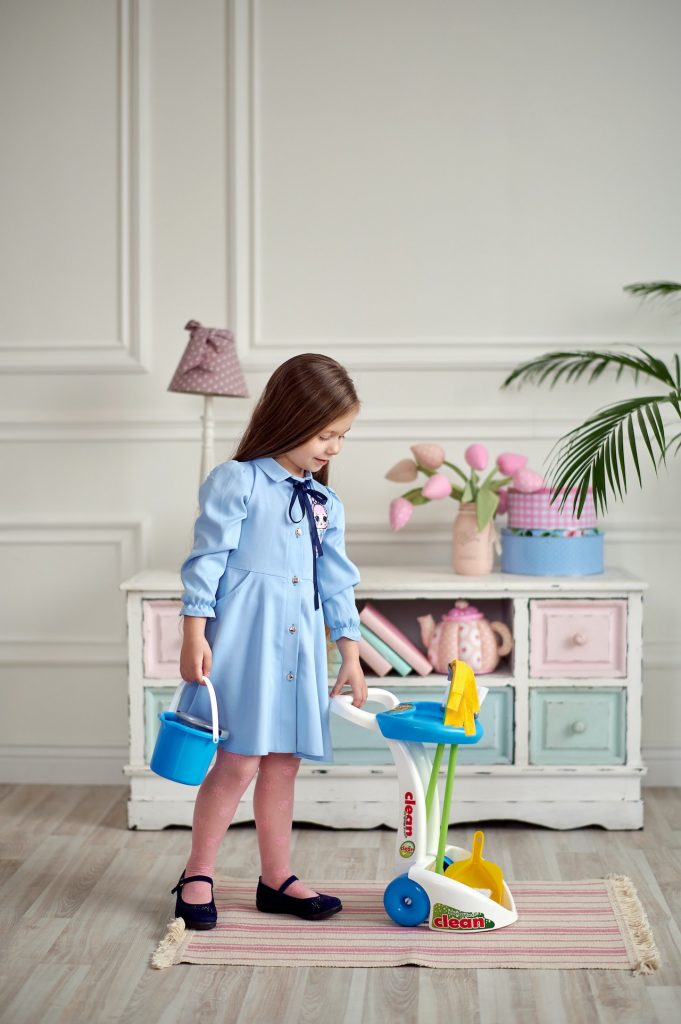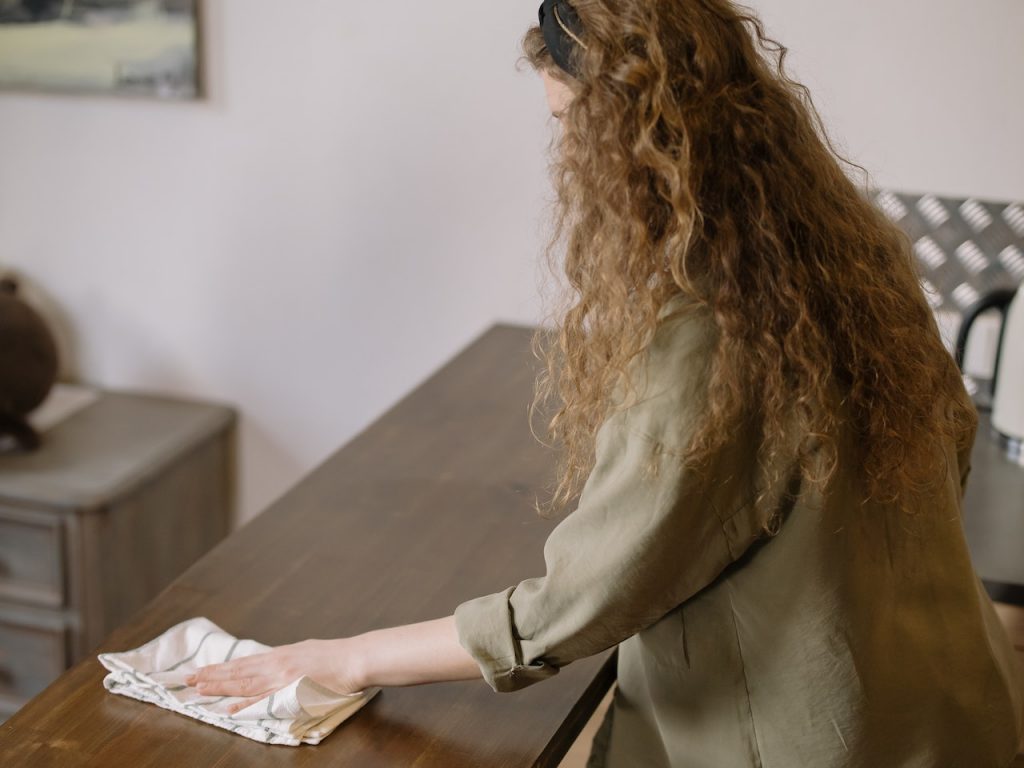If you’re looking for a safer and more eco-friendly way to clean your home, you’ve come to the right place!
In this ultimate guide to natural and organic home cleaning recipes, we’ll discuss the perks of using natural and organic cleaning products, the typical ingredients in these recipes, and simple DIY cleaning solutions for various areas of your home. We’ll also include advice on the proper usage and storage of these products and suggestions for eco-friendly and sustainable cleaning supplies and tools.
So, prepare to revamp your cleaning routine for a healthier and more environmentally friendly home!
The Benefits of Natural and Organic Home Cleaning
Explore the ultimate guide to natural and organic home cleaning, a holistic approach to keeping your living spaces clean and healthy. Embrace eco-friendly practices that promote sustainable living using non-toxic and chemical-free cleaning solutions.
When you opt for natural and organic cleaning products, you safeguard your family’s health and contribute to a healthier environment. These environmentally friendly options are crafted using ingredients like essential oils and plant-based extracts, harnessing their natural cleaning power. Green cleaning practices ensure a safer home environment and help reduce harmful chemicals released into water sources and ecosystems. Sustainable cleaning methods protect the planet and promote a culture of healthy living for both you and future generations.
.jpg_00.jpeg)
Why Choose Natural and Organic Cleaning Products?
Consider using natural and organic products to clean your home. They can do wonders for your health and the environment. These eco-friendly solutions are safe for you, your family, and your pets because they contain no harmful chemicals or toxins.
Making the switch to natural and organic cleaning products has some great perks. Not only can it lower the chances of skin irritations and breathing issues caused by harsh chemicals, but it can also boost the overall well-being of your home. By going with non-toxic options, you’re creating a healthier indoor space that’s free from artificial scents and any potentially harmful leftovers. Plus, eco-friendly cleaners often come in packaging that can be recycled or will break down naturally, which supports sustainable practices and helps cut down on waste and your carbon footprint.
Common Ingredients in Natural and Organic Cleaning Recipes
When you’re exploring natural and organic cleaning recipes, you’ll find some key ingredients that are absolute game-changers. From items you probably already have in your larder to eco-friendly options, these DIY solutions are all about keeping it clean in the safest way possible.
Take vinegar, for example. This stuff is like the superhero of cleaning ingredients, with its antimicrobial powers that make it unbeatable for disinfecting surfaces and tackling tough grease stains.
And then there’s bicarbonate of soda, the unsung hero with its gentle scrubbing action that can take on grime like a champ while also zapping away any funky odours.
Let’s not forget that essential oils are not just for making things smell good. These little drops pack a punch with their natural antibacterial and antifungal properties, adding an extra layer of germ-fighting power to your DIY cleaning concoctions.
Mixing these ingredients together is like assembling the Avengers of cleaning – they team up to wipe out dirt and germs without any of those harsh chemicals you find in traditional cleaners. They are suitable for your home and eco-friendly, so you can feel good about keeping things clean while being kind to the planet.
.jpg_10.jpeg)
Understanding the Purpose of Each Ingredient
If you want to create effective natural and organic cleaning recipes, you’ve got to get to know each ingredient’s purpose and properties. From vinegar’s antibacterial kick to essential oils’ refreshing scents, every element is crucial in whipping up non-toxic, planet-friendly cleaning solutions.
Vinegar is a real MVP in homemade cleaners. It doesn’t just disinfect surfaces – it’s also a champ at cutting through grease. Vinegar can tackle grime and dirt like nobody’s business thanks to its acid powers, making it the go-to for stain removal and odour elimination.
Essential oils, like lavender and tea tree, aren’t just there for the pleasant smell. They bring some serious natural antibacterial and antifungal muscle to your cleaning game, cranking up the power while creating a calming vibe in your crib.
And don’t forget about the bicarbonate of soda! This stuff’s got some serious scrubbing chops, perfect for taking on stubborn stains without roughing up your surfaces. It’s the gentle giant of the cleaning world.
DIY Natural and Organic Cleaning Recipes
Unlock the power of DIY natural and organic cleaning recipes that are both effective and environmentally safe. From homemade all-purpose cleaners to non-toxic disinfectants, you can learn how to create a sustainable and healthy cleaning routine for your household.
These DIY solutions will keep your living spaces sparkling clean and reduce your exposure to harmful chemicals found in conventional cleaners. With simple ingredients like vinegar, bicarbonate of soda, and essential oils, you can tackle tough stains, get rid of germs, and freshen up your home naturally.
Embrace the benefits of green cleaning by trying out easy-to-follow recipes that are gentle on the planet and your health, all while being light on your wallet. Ready to dive into the world of DIY cleaning and make your home a safer haven for all?
Easy and Effective Recipes for Different Areas of the Home
Discover easy and effective DIY cleaning recipes tailored for different areas of your home, from kitchens to bathrooms. These homemade solutions, often using ingredients like vinegar, bicarbonate of soda, and lemon, provide non-toxic and eco-friendly alternatives to commercial cleaning products.
You can create a powerful all-purpose cleaner for your kitchen by mixing equal parts water and vinegar in a spray bottle. This solution works wonders on worktops, appliances, and sinks.
In the bathroom, try sprinkling bicarbonate of soda in the toilet bowl, followed by vinegar, for a fizzy reaction that helps to scrub away grime.
To freshen up your living spaces, you could simmer water with lemon slices to naturally deodorise the air. These simple hacks offer effective cleaning without the harsh chemicals found in traditional cleaners.
Tips for Using Natural and Organic Cleaning Products
Enhance your cleaning routine by effectively incorporating valuable tips for using natural and organic cleaning products. Whether you’re a cleaning pro or just starting, these guidelines will help you maintain a clean and healthy home that is safe and eco-friendly.
When you add natural and organic cleaning products to your arsenal, make sure to read the labels carefully. Understanding the ingredients and usage instructions will help you get the most out of your products. Store them in a cool, dry place away from direct sunlight to keep them working their best. And remember to keep these eco-friendly solutions out of the hands (or paws) of little ones to avoid any accidents.
By following these simple yet essential safety measures, you can create a healthier living space and do your part in reducing your carbon footprint.
Proper Usage and Storage
When you add natural and organic cleaning products to your cleaning routine, it’s important to know how to use and store them properly. Follow some simple guidelines to ensure you’re cleaning safely and effectively for your family and the environment.
Always read the instructions on the labels of your cleaning products to avoid any bad reactions or mistakes. Keep these products in a cool, dry spot away from direct sunlight so they stay effective.
To smoothly integrate eco-friendly solutions into your cleaning routine, consider setting aside a specific spot to store them along with your other household must-haves. By adopting these safe cleaning habits, you’ll make your home healthier and support sustainability in your daily practices.
Eco-Friendly Cleaning Supplies and Tools
Explore the world of eco-friendly cleaning supplies and tools that prioritise sustainability and reusability. From biodegradable cleaning solutions to reusable tools, discover how to minimise waste and promote a greener, cleaner environment within your household.
By opting for eco-friendly cleaning products, you create a healthier living space and contribute positively to the planet. Many environmentally safe products are made from natural ingredients, free of harsh chemicals that can harm your health and the environment.
Switching to sustainable practices like biodegradable cleaning solutions can significantly reduce your carbon footprint. Investing in reusable cleaning tools saves you money in the long run and lessens the amount of single-use plastic waste ending up in landfills or oceans.
Embracing these green cleaning habits fosters a more sustainable lifestyle and encourages others to follow suit.
Options for Sustainable and Reusable Cleaning Supplies
When picking out cleaning supplies and tools for your home, think about going for sustainable and reusable options that are all about eco-friendly vibes. Whether it’s biodegradable cleaning agents or reusable cloths and brushes, these choices help reduce waste and show some love for our planet.
Choosing environmentally safe products isn’t just good for your household—it’s also part of a bigger push towards sustainable living. Biodegradable cleaning agents, like vinegar and baking soda, are solid alternatives to harsh chemicals that can mess with water systems. Getting your hands on durable brushes and cloths made from recycled materials means they’ll last longer, and you won’t have to keep buying new ones all the time.
So, when you make mindful choices in your cleaning routine, you’re basically like an eco-warrior, helping to keep the planet in top shape for the next crew.

